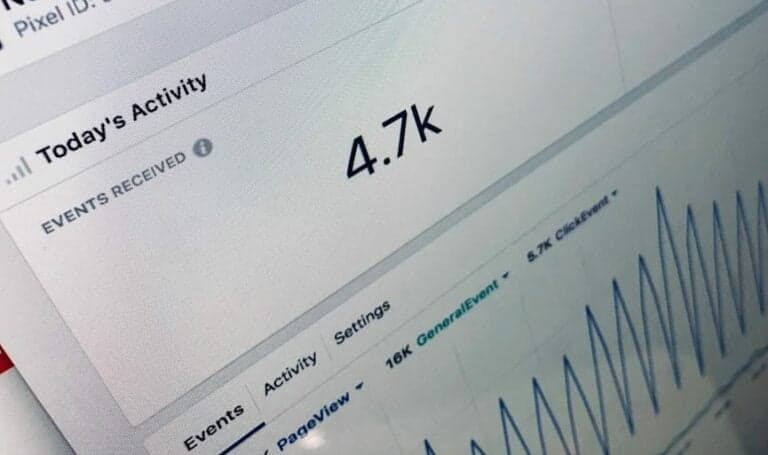Google Ads management is a crucial aspect of any successful online advertising campaign. With the increasing competition in the digital space, it is essential for businesses to effectively manage their Google Ads to maximise their reach and achieve their marketing goals. This post aims to provide a comprehensive guide to Google Ads management, covering everything from understanding the basics to analysing and measuring success. Whether you are new to Google Ads or looking to improve your current campaigns, this article will provide you with valuable insights and strategies to optimise your advertising efforts.
Understanding the Basics of Google Ads Management
Google Ads, formerly known as Google AdWords, is an online advertising platform developed by Google. It allows businesses to create and display ads on Google’s search engine results pages (SERPs) and partner websites. The ads are displayed based on keywords that users search for, making it a highly targeted form of advertising.
Google Ads work on a pay-per-click (PPC) model, where advertisers only pay when someone clicks on their ads. Advertisers bid on keywords relevant to their products or services, and Google uses a combination of factors, including bid amount and ad quality, to determine the placement of the ads on the SERPs.
Google Ads management involves various components, including keyword research, ad copywriting, landing page optimisation, budgeting, and performance analysis. Each component plays a crucial role in the success of your campaigns and requires careful planning and execution.
Setting Clear Goals for Your Google Ads Campaign
Setting clear goals is essential for any marketing campaign, including Google Ads. Without clear goals, it becomes challenging to measure the success of your campaigns and make informed decisions about optimising them.
Common goals for Google Ads campaigns include increasing website traffic, generating leads or sales, improving brand awareness, and promoting specific products or services. It is important to set specific, measurable, achievable, relevant, and time-bound (SMART) goals that align with your overall marketing objectives.
To set achievable goals, consider factors such as your target audience, competition, budget, and industry trends. It is also important to regularly review and adjust your goals based on the performance of your campaigns.
Conducting Thorough Keyword Research for Effective Ads
Keyword research is a critical component of Google Ads management. It involves identifying the keywords and phrases that your target audience is likely to use when searching for products or services similar to yours.
Effective keyword research helps you understand the search intent of your audience and allows you to create highly relevant ads that are more likely to attract clicks and conversions. It also helps you identify negative keywords, which are terms that you do not want your ads to appear for.
To conduct effective keyword research, start by brainstorming a list of relevant keywords and phrases. Use keyword research tools like Google Keyword Planner, SEMrush, or Moz Keyword Explorer to expand your list and gather data on search volume, competition, and cost-per-click (CPC) for each keyword.
Crafting Compelling Ad Copy to Attract Your Target Audience
Ad copy is the text that appears in your Google Ads. It plays a crucial role in attracting the attention of your target audience and convincing them to click on your ads. Well-crafted ad copy should be concise, compelling, and relevant to the user’s search query.
To write effective ad copy, start by understanding the pain points and desires of your target audience. Highlight the unique selling points of your products or services and include a clear call-to-action (CTA) that encourages users to take the desired action.
It is also important to test different variations of ad copy to see which ones perform best. A/B testing allows you to compare different versions of your ads and make data-driven decisions about which ones to use.
Optimising Your Landing Pages for Better Conversions

A landing page is the web page that users are directed to after clicking on your ads. It is crucial to optimise your landing pages to ensure a seamless user experience and maximise conversions.
Optimising your landing pages involves various factors, including page load speed, mobile-friendliness, clear and relevant content, compelling visuals, and a prominent CTA. It is important to align the messaging and design of your landing pages with your ads to provide a consistent user experience.
Regularly monitor the performance of your landing pages using tools like Google Analytics or heatmaps to identify areas for improvement. A/B testing can also be used to test different elements of your landing pages and optimise them for better conversions.
Creating and Managing a Budget for Your Ads Campaign
Creating and managing a budget is an important aspect of Google Ads management. It allows you to allocate your advertising spend effectively and ensure that you are getting the best return on investment (ROI) for your campaigns.
When creating a budget, consider factors such as your marketing goals, target audience, competition, and industry trends. Set a daily or monthly budget that aligns with your overall marketing objectives and monitor your spending regularly to ensure that you are staying within your budget.
Different budgeting strategies can be used depending on your goals and resources. For example, you can set a maximum bid limit to control your spending or use automated bidding strategies like target CPA (cost-per-acquisition) or target ROAS (return on ad spend) to optimise your budget based on your desired outcomes.
Analysing and Measuring the Success of Your Ads
Analysing and measuring the success of your ads is crucial for optimising your campaigns and achieving your marketing goals. It allows you to identify what is working well and what needs improvement.
There are various metrics that you can track to measure the success of your ads, including click-through rate (CTR), conversion rate, cost-per-click (CPC), cost-per-acquisition (CPA), and return on ad spend (ROAS). It is important to regularly monitor these metrics and compare them against your goals and industry benchmarks.
To analyse the performance of your ads, use tools like Google Analytics or Google Ads’ built-in reporting features. These tools provide valuable insights into user behavior, demographics, and conversion tracking, allowing you to make data-driven decisions about optimising your campaigns.
Utilising Different Ad Formats to Maximise Your Reach
Google Ads offers various ad formats to help you maximise your reach and engage with your target audience effectively. Each ad format has its own unique features and benefits, and it is important to choose the right format based on your goals and target audience.
Some common ad formats include text ads, image ads, video ads, responsive ads, and shopping ads. Text ads are the most basic ad format and consist of a headline, description, and URL. Image ads allow you to include visuals to attract attention. Video ads are engaging and can be used to tell a story or demonstrate a product. Responsive ads automatically adjust their size and appearance to fit different ad spaces.
When choosing an ad format, consider factors such as the nature of your products or services, the preferences of your target audience, and the platforms or devices they are likely to use. It is also important to regularly test different ad formats to see which ones perform best for your campaigns.
Staying Up-to-Date with Google Ads Best Practices and Updates
Staying up-to-date with Google Ads best practices and updates is crucial for effective campaign management. Google regularly introduces new features, updates its algorithms, and provides recommendations for optimising your campaigns.
To stay informed about Google Ads updates, subscribe to official Google blogs or newsletters that provide information about new features and best practices. Join online communities or forums where you can connect with other advertisers and share insights and strategies.
It is also important to regularly review your campaigns and make adjustments based on the latest best practices. Keep an eye on industry trends and competitor strategies to ensure that you are staying ahead of the curve.
Hiring a Professional Google Ads Management Service for Expert Support
Managing Google Ads campaigns can be time-consuming and complex, especially for businesses with limited resources or expertise. Hiring a professional Google Ads management service can provide expert support and help you achieve better results.
A professional Google Ads management service can handle all aspects of your campaigns, including keyword research, ad copywriting, landing page optimisation, budgeting, and performance analysis. They have the knowledge and experience to create effective campaigns that align with your goals and target audience.
When choosing a Google Ads management service, consider factors such as their experience, expertise, track record, and pricing structure. Look for testimonials or case studies that demonstrate their success in managing campaigns similar to yours.
Google Ads management is a critical aspect of any successful online advertising campaign. By understanding the basics, setting clear goals, conducting thorough keyword research, crafting compelling ad copy, optimising landing pages, creating and managing a budget, analysing and measuring success, utilising different ad formats, staying up-to-date with best practices and updates, and considering hiring a professional service, you can optimise your campaigns and achieve your marketing goals.
Implement the tips and strategies discussed in this blog post to improve the performance of your Google Ads campaigns. Regularly monitor and analyse your campaigns to make data-driven decisions about optimising them. With careful planning and execution, you can maximise your reach, attract your target audience, and achieve better results with Google Ads.
Want someone who manage your Google Ads for you and to make sure you’re getting the most of your advertising spend and staying ahead of your competitors? Then check out our Google Ads Management Service in Melbourne.
FAQs
What is Google Ads Management?
Google Ads Management refers to the process of creating, monitoring, and optimising Google Ads campaigns to achieve the desired results. It involves selecting the right keywords, creating compelling ad copies, setting up bids, and tracking the performance of the campaigns.
Why is Google Ads Management important?
Google Ads Management is important because it helps businesses to reach their target audience, increase brand awareness, and drive more traffic to their website. It also helps to improve the ROI of the advertising budget by optimising the campaigns for better performance.
What are some Google Ads Management tips?
Some Google Ads Management tips include selecting the right keywords, creating compelling ad copies, setting up bids based on the target audience, monitoring the performance of the campaigns regularly, and optimising the campaigns for better results.
How can I improve the performance of my Google Ads campaigns?
You can improve the performance of your Google Ads campaigns by selecting the right keywords, creating compelling ad copies, setting up bids based on the target audience, monitoring the performance of the campaigns regularly, and optimising the campaigns for better results. You can also use A/B testing to test different ad copies and landing pages to see which ones perform better.
What are some common mistakes to avoid in Google Ads Management?
Some common mistakes to avoid in Google Ads Management include targeting the wrong audience, using irrelevant keywords, not monitoring the performance of the campaigns regularly, not optimising the campaigns for better results, and not using A/B testing to test different ad copies and landing pages.








